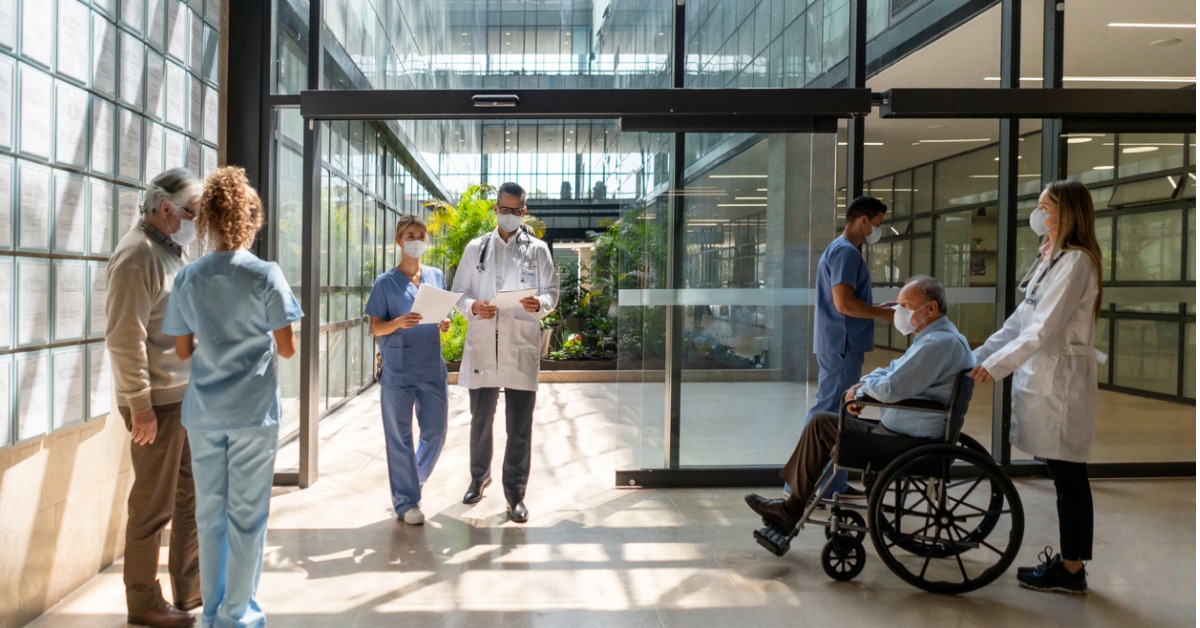
Patients in healthcare settings are more vulnerable to infections than all other locations in the community. Hospitals and aged care facilities house elderly and immunocompromised people who are at greater risk of being infected and unable to recover as fast as someone who is younger and in good health.
What is a Nosocomial Infection?
Nosocomial infections are infections not present at the time of admission and are acquired at least 48 hours after being admitted to a healthcare setting. Also known as hospital-acquired infections, nosocomial infections can lead to serious illnesses and even death.
The most common nosocomial infections include staphylococcus Aureus, Escherichia coli and Enterococci candida. The pathogens are found on the skin and mucous membranes. Nosocomial infections occur in healthcare facilities of first-world, wealthy countries as well as third-world countries. Patients are at extreme risk when the infection is caused by antibiotic-resistant pathogens.
Who is Most at Risk of Nosocomial Infection?
Anyone who is hospitalised is at risk of developing a nosocomial Infection. It’s estimated that there are 200,000 infections in Australia every year. An estimated 17-29% of patients with a bloodstream hospital acquired infection will die while still in hospital. The cost of treatment and lost hospital bed days is in the billions. The following risk factors increase the chance of a person developing a nosocomial infection:
-
Long hospital stays.
-
Being elderly.
-
Being a young child.
-
Overusing antibiotics.
-
Medical devices and procedures that are invasive (urinary and central venous catheters, surgery and mechanical ventilation).
-
Comorbidities including diabetes, lung disease, malnutrition and renal problems.
Preventing Nosocomial Infections
Many nosocomial infections are preventable. Healthcare workers not following infection control and prevention procedures is one of the main causes of nosocomial infection transmission. Studies have also found a significant source of infection are the sinks and drains in healthcare facilities.
Two Kinds of Transmission
There are two kinds of transmission when it comes to nosocomial infections - exogenous transmission and endogenous transmission.
Exogenous Transmission
Exogenous transmission occurs through person to person interactions. This is the reason healthcare staff must practice careful hand hygiene as moving from room to room can cause cross-contamination. Wearing personal protective equipment correctly to cover clothing can assist. Disinfecting surfaces and sterilising equipment and medical devices also helps reduce the risk. Only using medical devices that are inserted into the body for the least amount of time can also reduce the chance of a nosocomial infection.
Endogenous Transmission
Endogenous transmission occurs with excessive and improper use of broad-spectrum antibiotics. Antibiotics disrupt the normal balance of bacterial flora leading to some bacteria over-growing. A person with a depressed immune system is at greater risk of contracting an infection. Transmission can also occur when bacteria is transferred from one part of the body to another.
Stopping the Bacterial Spread
The best way to prevent nosocomial infections is to stop the deadly bacteria from entering patients’ rooms. Staff have to be extremely vigilant about washing their hands and clothing to ensure the bacteria doesn’t move from room to room via healthcare workers.
Multiple studies have revealed that patients have contracted a nosocomial infection that couldn’t be traced back to any other person in the setting. Genomic tests showed the infection was acquired through bacteria in the sinks and drains in the hospital room. The water reservoirs of sinks and drains were found to be a match for the same pathogen. Open drains allow bacteria to enter the room and risk infecting a person when their body can least fight off an infection. The sink and drain were clean after treatment, however it wasn’t long before the bacteria was back and posing serious health concerns for patients.
Green Drain™
The only way to ensure dangerous pathogens don’t infect patients and the surfaces in their bathroom and room is to use mechanical devices. Green Drain™ is a waterless trap seal for floor drains which allow water and debris to pass through but stops infection-causing pathogens, noxious fumes and pests from entering a room from the drain. The patented silicone skirt technology is retrofitted to existing drains and comes in several sizes to fit the most common drain sizes. The deadly pathogens and microorganisms that can breed in drains are sealed off.
The clinical version of Green Drain™ has been fitted in a number of hospitals and healthcare facilities to protect patients against nosocomial infections, but Green Drain™ has also been used in hotels, homes, commercial and industrial premises, restaurants, schools and universities to stop odour and bacteria.
For more information about Green Drain™, call (02) 9099 4442 or contact us online.